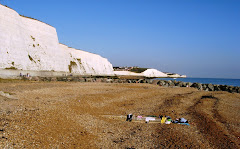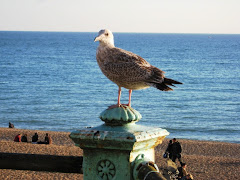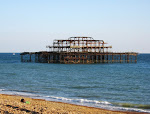
Another week, another pub quiz.
Although we're not really great pub quiz aficionados, (at least not compared with some) we do go now and again, and on the Bank Holiday week-end escaped the appalling autumnal weather and went to one in the Prestonville Arms in Brighton. It was in aid of the Sussex Wildlife Trust and the Royal Society for the Protection of Birds, and the theme was, as you might expect, all to do with wildlife and the natural world.
We started off appallingly, as the first round was all about birds and fish. I'm no good on birds (I was trained as a botanist) and the fishy questions seemed terribly hard to us.
It gradually got better, but we played our joker (for double points) on completely the wrong round: our best round was entitled 'the Natural World' and was more about geography and geology than wildlife per se. Of course we played it on one of our weaker rounds, as it turned out, but that's the luck of the draw, and in any case it made no material difference to the final score. (We played it on a round including a section where you had to name a series of mammals from pictures of their footprints. Hopeless!)
The only question we got wrong on our best round was trying to name the UK's five longest rivers: we got four, and mentioned the fifth (actually the fourth longest) during our deliberations, but plumped for the wrong one. (*They are listed at the foot of the entry).
C'est la vie. But, unusually for us at the Prestonville (it claims to have Brighton's most difficult general knowledge quiz), we came a very respectable fourth out of sixteen teams. And it raised a very creditable £300 for the two charities concerned, which is the point, isn't it, really?
* Severn, Thames, Trent, Great Ouse, Wye.









